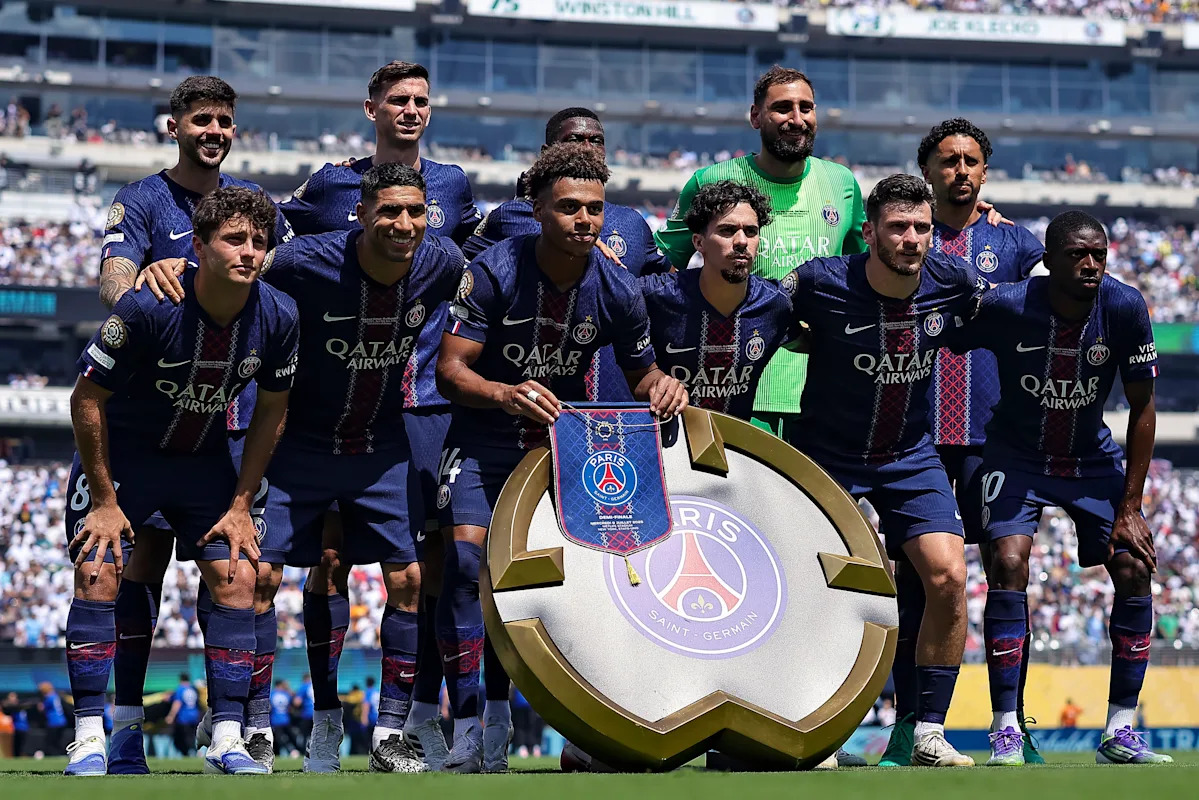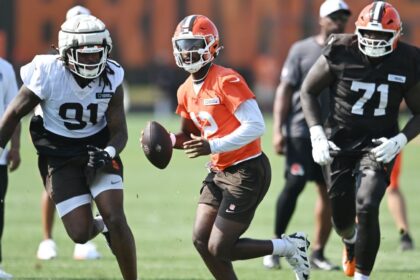East Rutherford, N.J. – As the Club World Cup approaches, Louis Enrique shared insights into Paris Saint-Germain’s impressive performance, highlighting their recent 4-0 victory over Real Madrid. According to Spanish journalists, PSG’s resilience is formidable, although Enrique acknowledged that they may not be invincible. Having triumphed in both France and Europe, they are now set to compete in the Club World Cup final this Sunday. “We’re all working together,” he stated, as players discussed their “connections” and “team effort” developed over the past two seasons.
However, Enrique discussed additional factors contributing to their success.
Through an interpreter, he noted that PSG’s budget plays a crucial role in their strategy, enabling them to attract the players necessary to maintain their playing style.
The rise of PSG to the pinnacle of soccer is significant, culminating in the upcoming final. This season, the club invested over $500 million on 11 new players, a shift that followed the departures of Neymar and Lionel Messi after Enrique’s arrival in 2023. Since the summer of 2022, nearly $1 billion has been spent on transfers, making them one of the largest spenders in football.
Their opponents on Sunday, Chelsea, have also made significant investments.
This Club World Cup final highlights a stage where rich clubs dominate the sport. PSG is owned by Qatar Sports Investment, while Chelsea is backed by a consortium of billionaires and Clearlake Capital, an American private equity firm. Together, they rank first and second globally in transfer expenditures over the past few seasons.
Wealth is indeed a crucial factor for their presence here. Between them, they account for the majority of players starting in the final, as well as additional talent on the bench.
Regardless of the outcome, financial rewards await both teams. Each club has secured more than $75 million in prize money from the Club World Cup, and with appearance fees, they could each earn over $100 million from FIFA.
The Club World Cup underscores patterns that define modern football: wealthy clubs purchase top talent, leading to victories that further increase their wealth, leaving others behind.
PSG invested nearly $1 billion in transfers, shaping their Club World Cup final journey. (Photo: Heuler Andrey/Eurasia Sport Images/Getty Images)
(Eurasia Sports Images via Getty Images)
The Financial Forces Behind PSG and Chelsea’s Rise
Both Chelsea and PSG struggled in European competitions before significant foreign investments changed their fortunes. PSG, purchased by Qatar in 2011, had only participated in the Champions League five times prior, while Chelsea, under Roman Abramovich’s ownership since 2003, had also made limited appearances in prestigious competitions.
Financial power quickly transformed their standings. Both clubs became fixtures in the Champions League, achieving significant domestic success. Following the Russian invasion of Ukraine, Abramovich was compelled to sell Chelsea, but under the new ownership led by Todd Boehly, spending reached new heights. During a period of just three months, they spent about $350 million, including $140 million on Enzo Fernandez and $80 million on Mykhailo Mudryk.
However, their spending did not always yield positive results, as many high-profile signings underperformed, leading to ongoing financial expenditure without corresponding success. Just last week, UEFA fined Chelsea $36 million for violating financial regulations.
Despite scrutiny, Chelsea continued to spend aggressively, adding over $100 million on new players as they prepared for the 2024-25 season, while also acquiring Joan Pedro and Jamie Gittens for another $150 million shortly after.
In contrast, PSG has demonstrated a more strategic approach to their investments, making shrewd acquisitions that fit into Enrique’s system. Young talents like Joao Neves and Willian Pacho have thrived, alongside established players whose transfers now seem like bargains.
Nevertheless, both clubs’ financial capabilities allow them to recover from mistakes or injuries more easily. Of the $2.9 billion spent on player transfers since summer 2022, about half involved players who did not feature in the Club World Cup semi-finals.
PSG and Chelsea will compete for over $100 million in prizes at the Club World Cup final. (Photo: Ira L. Black – FIFA/FIFA via Getty Images)
(FIFA via Ira L. Black – Getty Images)
The Accumulation of Wealth
With their staggering spending, PSG and Chelsea’s financial power sets them apart from the majority of other teams in the Club World Cup. Each has spent more on a single player than the entire transfer fees of 16 out of the other 30 competing teams.
However, financial muscle does not guarantee victory. Both teams faced defeats against clubs from Brazil in the group stage. The unpredictable nature of football often narrows the gap between the wealthy and their rivals.
Nonetheless, as the Club World Cup concludes, the voice of money remains prominent. FIFA and tournament organizers have reserved a significant portion of prize money for European participants, with more than half of the $1 billion total allocated for clubs from Europe, reflecting their commercial stature.
This strategy appears designed to both incentivize European giants and contain financial disparities in domestic leagues beyond Europe.
However, this policy only intensifies the inequality permeating the sport. European clubs will receive $623 million of the total prize money, while the remaining 20 teams will divide the remaining $377 million, widening the gap over time.
It is no coincidence that the two wealthiest clubs, Chelsea and PSG, find themselves competing for the title in this expanded tournament, and if they return for future editions, it likely won’t be an accident.
**Fan Take**: This news underscores the widening financial gap in soccer, where elite clubs like PSG and Chelsea dominate not just the pitch but also the financial landscape. For fans, this trend could lead to fewer competitive matches and a distorted sense of achievement, raising questions about the future of the sport and its integrity.



